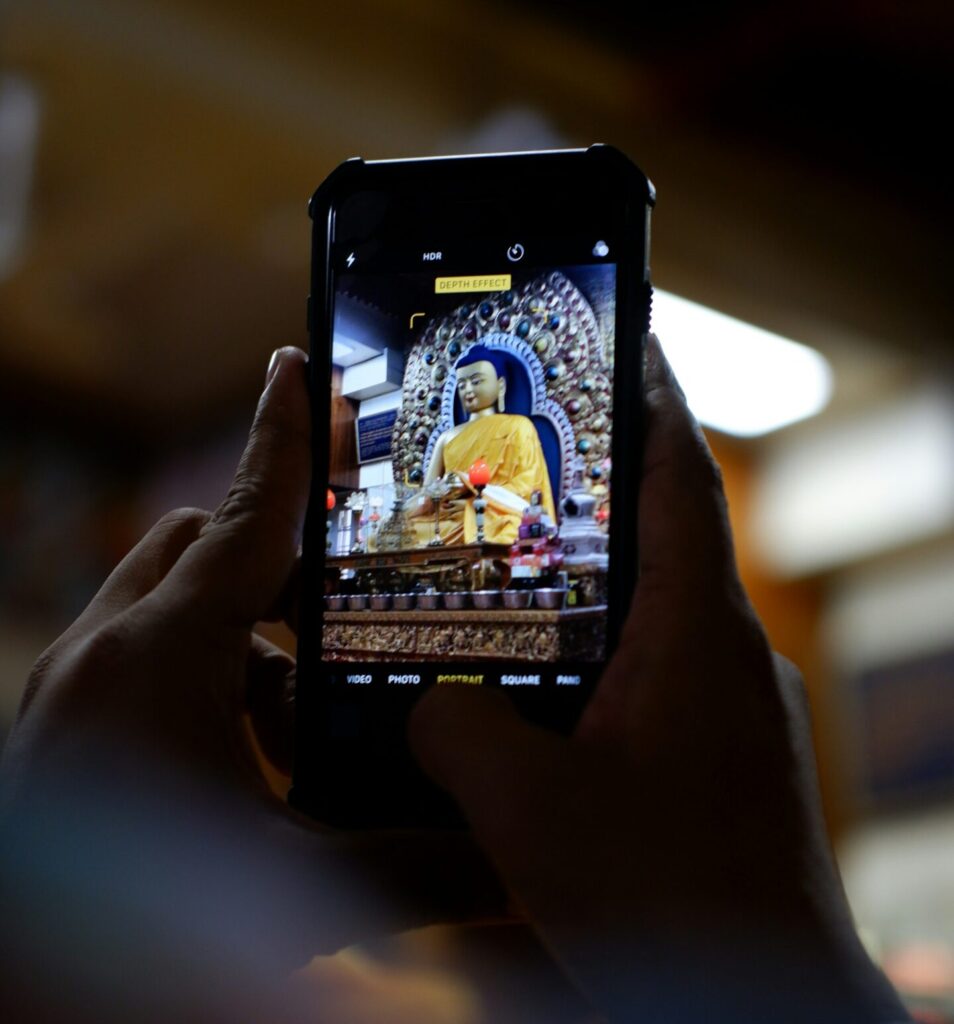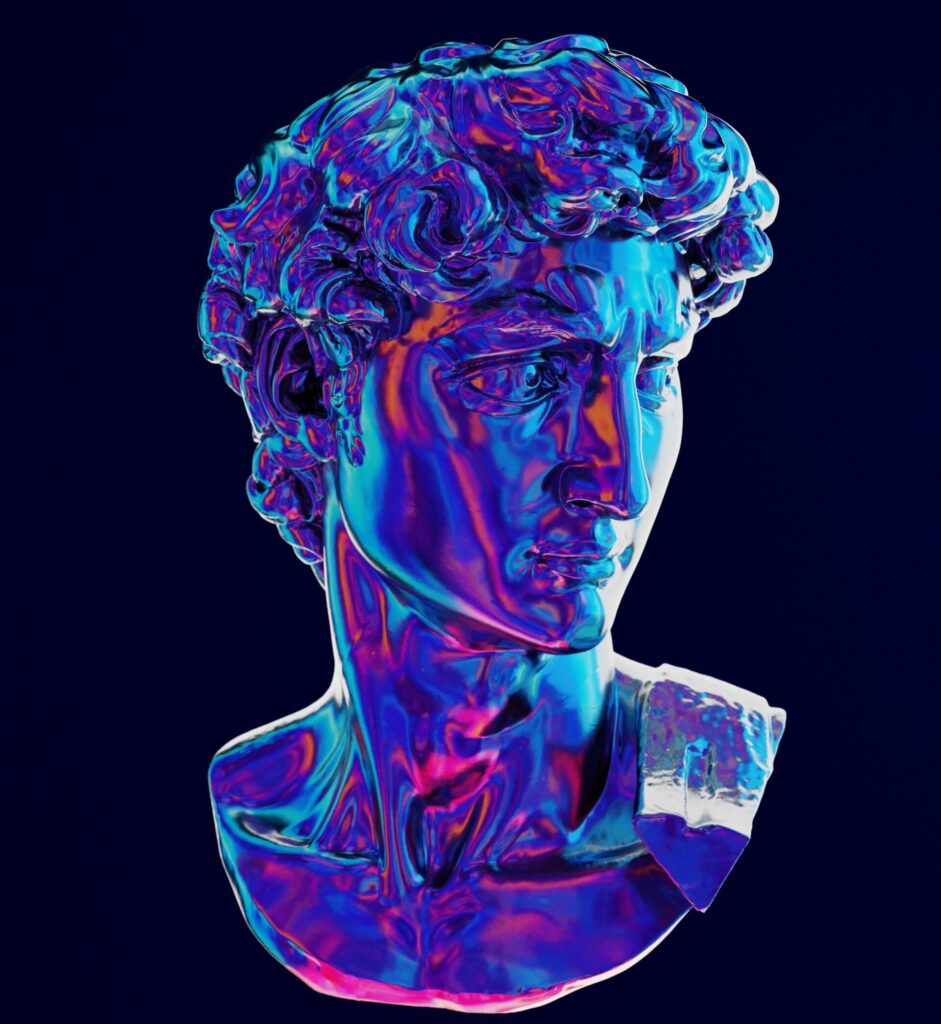While scholars in this forum have been reflecting on artificial intelligence’s potential impact on human agency, autonomy, and identity, especially for religious communities, new revolutionary tools and expansive platforms have emerged, creating new concerns about how AI abilities are outpacing human technological skills. Google DeepMind has launched Genie 2, a platform that transforms a single image into an interactive 3D world,¹ and DeepSeek.² This scaled open-source large language model exceeds previous ChatGPT and LLaMA LLM versions in coding abilities and reasoning tasks.
At the same time, world leaders gathered in January 2025 for the Paris AI Action Summit to discuss governance that ensures AI technologies contribute positively to human development and societal well-being. One of the outcomes of this summit was a “Statement on Inclusive and Sustainable Artificial Intelligence for People and the Planet” ³, which provides guidelines for creating human-centric, ethical, secure, and trustworthy AI systems. The statement also addresses concerns expressed in this forum about how AI potentially impacts issues of human uniqueness, agency, and spirituality.

For example, Giulia Evolvi argues that contemporary Catholicism is hypermediated through digital media, extending the idea of hypertext where information is presented nonlinearly and interactively. This is exemplified by the Vatican’s creation of Luce, a manga-like mascot for the Holy Year 2025, which blends religious messages with pop culture to engage young people. Evolvi discusses the Vatican’s dynamic adoption of new technologies while maintaining traditional practices, such as Pope Francis’ cautious endorsement of confession apps. Hypermediation blurs boundaries between platforms and topics, empowering diverse voices and facilitating discussions within the Catholic community. Digital media empowers religious groups to challenge authorities and negotiate practices, reflecting both the opportunities and challenges of the digital age. Evolvi emphasizes that digital media, including AI, are inevitable for modern religious practice, requiring careful evaluation by leaders.
Pauline Hope Cheong emphasizes the critical role of human leadership and labor in the development and deployment of AI. She argues that AI systems, including religious chatbots and automated services, rely heavily on human input and authority. Religious users and communities must carefully understand and evaluate AI design. For instance, the Episcopalian chatbot Cathy prioritizes official resources to avoid misinformation. Cheong underscores that technology, corporate values, and historical power dynamics impact religious AI innovations. Spiritual leaders must be involved in AI development to ensure it aligns with human communication and care. Examples like the robot monk Xian’er highlight collaborative efforts for proper functioning. Cheong concludes that agency in AI is distributed and contextually accomplished, urging leaders to shape AI in line with their mission and values. AI requires careful governance and human oversight to serve the highest good within religious communities.

In his essay, Philip Butler explores the potential of generative artificial intelligence (G-AI) to augment spirituality by serving as a spiritual companion. G-AI systems create new content (text, images, music, audio, and videos) using foundation AI models that are capable of multitasking with minimal training. Butler suggests G-AI can enhance spirituality by creating feedback loops that make spiritual practices more effective and seamlessly integrate them into daily life. He describes his work with the Iliff AI Institute, focusing on AI that reflects Black culture and spiritualities. For example, designing spiritual G-AI for Haitian Vodou requires capturing its dynamic, multi-soul systems. Butler emphasizes the importance of culturally relevant, accurate, and collaboratively developed spiritual AI systems. However, he acknowledges the risks, such as technology addiction and unhealthy attachments, necessitating careful governance to ensure positive outcomes.
Finally, Randall Reed writes about the revolutionary potential of AI Large Language Models (LLMs) and chatbots, suggesting that understanding this generation of AI requires new metaphors, particularly those intersecting with religion. He highlights Mustafa Suleyman’s concept of AI as a “new digital species,” an unbounded technology with undefined limits and abilities.⁴ Reed compares AI to saints, arguing that both are non-material entities offering guidance and support, emerging from human knowledge but transcending human limitations. Using the film Her, Reed illustrates how users can form personal relationships with AI, much like saints’ interactions with their devotees. He concludes that AI, like saints, can help humans navigate modern challenges, suggesting that AI can serve as a new patron, providing knowledge and aid in daily life. This comparison highlights AI’s potential to fulfill roles traditionally occupied by religious figures, providing a framework for understanding the impact of AI on human relationships and society.
AI Offers Positive Opportunities to Religious Communities
In reviewing these essays, authors noted that while all authors highlight specific concerns about AI, they also acknowledge the potential it can offer religious groups and users. Each suggests that AI can be utilized in ways that enhance various spiritual practices by offering unique, personalized, and interactive experiences. This is illustrated in Butler’s work on spiritual G-AI agents that utilize therapeutic modalities in ways authentic to Black communities, and in Cheong’s discussion of how AI-powered chatbots and robot priests can provide spiritual guidance and support for ministry. Such examples illustrate that AI can serve as spiritual companions, educational resources, and therapeutic outlets, thereby enhancing individuals’ religious experiences and facilitating positive mental health support or spiritual growth when combined with the input of religious leaders in developing such tools.

Byproducts from AI Engagement Create Shared Concerns
However, these discussions of spiritual opportunities offered by AI were tempered by some general concerns. Authors worry about the potential for AI to diminish human agency and autonomy, as AI systems can make decisions that may surpass human understanding and control. Cheong emphasizes the need to remember that AI technologies are often entrenched in governmental and corporate power structures that must be examined and kept in check. Butler noted that AI can be an addictive technology, noting that it can exploit users’ neurological responses, creating dependency. Evolvi highlighted how AI can spread misinformation and lead to post-truth politics. This stresses the need for a new generation of media literacy that teaches critical AI and technological skills. Also, Reed warns that AI’s non-material nature can encroach on areas traditionally occupied by religion, challenging established norms and practices. Collectively, these concerns underscore the need for meticulous governance and oversight to ensure that AI aligns with human values and traditions.
Impact of AI on Human Agency and Autonomy
Such concerns highlight the need to carefully consider AI’s impact on human agency, as AI can both enhance and diminish a person’s ability to act and choose, depending on the tools used. I echo Cheong’s view that agency is distributed and contextualized in new ways in AI automated systems, requiring collaborative efforts and multiple stakeholders’ input in tech design and utilization. Like Butler, I am also excited about the possibility of spiritual augmentation and AI tools that can empower individuals to integrate new forms of spiritual development and accountability into various aspects of their daily lives. However, this also raises questions about the potential problem of making our spiritual practices vulnerable to the design of technology corporations, and how they could exploit users and their information through this level of intimate transparency. This echoes the discussion of chatbots as spiritual companions that inform our decision-making, potentially leading to dependency and reduced autonomy. I also agree with Evolvi’s concern about how AI further complicates and blurs the boundaries between traditional and new religious authorities and community influence, which is already evident in digital spaces. This emphasizes the importance of balancing the leveraging of AI’s capabilities and preserving human agency, ensuring that AI serves as a tool rather than a replacement for human decision-making.

The Need to Consider a Religious-Social Shaping Approach to AI
Each of the authors emphasizes the importance of religious communities critically evaluating and integrating AI in a manner that aligns with their values and mission, ensuring that AI supports rather than supplants human authority. For me, this harkens back to my understanding that religious communities actively engage with new and emerging technologies through the lens of their religious traditions and values. I refer to this as the Religious-Social Shaping of Technology (RSST) approach,⁵ which brings the social shaping of technology framework into religious contexts to understand how communities negotiate and adapt to technological changes.
RSST focuses on four areas of reflection. Religious Tradition and History analyzes how a community’s historical practices and beliefs influence its engagement with new media. Contemporary Community Values and Priorities examines the current values and priorities of the community, considering how these shape their interaction with technology. Negotiation and Innovation of Technology focuses on how communities negotiate and innovate technology to align with their religious practices and values. Communal Discourses Applied to Technology explores the discussions and narratives within the community that inform their understanding and use of technology. I argue that the RSST approach offers a valuable resource to religious communities when evaluating their approach to AI technology. It promotes communal adaptation and evaluation of AI to fit specific spiritual practices and core values. Additionally, it emphasizes the importance of understanding and addressing communal narratives and discussions about AI, facilitating informed decision-making and a collective approach to technology adoption.
Implications and New Considerations for a World with AI
This essay forum has sought to address this question:
How should we understand current negotiations between the human spirit, agency, and religion in an age of digital mediation and artificial intelligence?
Each essay presents nuanced perspectives on the complex negotiation between the human spirit, agency, and religion. It involves adapting new technologies, centering on human authority, leveraging AI for spiritual augmentation in an ethical manner, and evaluating our understanding of AI’s role in our lives. This requires ongoing reflection to ensure that digital technologies enhance, rather than undermine, religious and spiritual experiences. Specifically, I argue we need more attention to the following issues.
First, awareness is needed on how AI systems are designed, mainly since such technologies rely heavily on human input of information and are guided by human-designed oversight. Religious leaders and authorities can play a crucial role in shaping AI by partnering with technology designers and innovators to ensure that spiritual technologies align with religious values and practices. Also, technology companies should be encouraged to partner more with the members of their target markets. This helps underscore the significance of human agency in developing and deploying AI technologies. By guiding the integration of AI into religious settings, leaders ensure that these systems support and enhance spiritual experiences while upholding ethical standards and cultural relevance.
Next, the ethical development of AI systems requires the creation of technologies that accurately reflect the specific cultural and religious contexts for which it is designed. This is especially important for AI designed to serve diverse user communities, including those targeting religious groups. AI can be shaped to provide more precise and relevant spiritual guidance. However, this takes intentionality, partnerships, and the recognition that one-size-fits-all user designs are often biased towards specific audiences and outcomes. This approach emphasizes the importance of developing frameworks for cultural specificity in designing and implementing AI technologies.

Finally, I argue that approaching AI as a new digital species, as Reed and Suleyman suggest, may be fruitful for religious reflection on technology. AI is capable of growing and evolving both like and unlike humans. If we accept this framing, we must consider how we define the expectations and boundaries of what it is to be human and non-human. This metaphor of AI as a companion or patron to humans, similar to the idea of a religious saint’s relationship with its devotee, offers a valuable model. It highlights that AI possesses both human traits and the input of humanity, but is designed to exceed and assist, or extend, human abilities. AI as a companion suggests cultivating a relationship built on understanding, support, and reciprocity, where both parties are responsible for the other. Such a metaphor could offer a helpful framework for explaining to religious communities why they should engage with AI. One cannot have input into a relationship that does not exist. This could foster an informed and thought-provoking discourse about AI in society, offering guidance and support in navigating the complexities of modern life.
In light of the central arguments presented in this forum summary, I suggest that religious communities and spiritual seekers should give more attention to how our technologies are shaping our understanding of the human spirit, agency, and religion. The ethical frameworks we develop and draw on to guide our technological choices will have a formative impact on our negotiations. We must emphasize the importance of respecting and enhancing human uniqueness, acknowledging the diverse ways in which individuals experience technologically mediated cultures and interact with the world. These guiding principles and critiques put forward in this forum emphasize the importance of AI in empowering individuals, ensuring they maintain control over their interactions with AI systems and can make informed decisions. Additionally, we must recognize the spiritual dimensions of human life and advocate for technologies that support well-being and holistic growth. When considering the RSST approach in conjunction with the discussion in this forum, I suggest that any statement or set of the principles presented or offered as a template for religious communities’ engagement with the digital and AI must consider how those groups can develop a harmonious relationship with technology, allowing them to maintain their core beliefs about the nature and purpose of human existence. We need more multidisciplinary and interactive conversations about the complexities of the age of AI to ensure that advancements within AI industries align with and support fundamental human values and are compatible with diverse religious sensibilities in a multicultural world.
Footnotes
- Jack Parker-Holder et al., “Genie: Generative Interactive Environments,” Google DeepMind, 2024, https://deepmind.google/discover/blog/genie/.
- Zhang Bi et al., “DeepSeek-V2: Towards Deeper and Cheaper Large Language Models,” arXiv preprint, 2025, https://arxiv.org/abs/2503.03480.
- “Statement on Inclusive and Sustainable Artificial Intelligence for People and the Planet,” Paris AI Action Summit, February 5, 2025, https://www.parisaiaction.org/statement2025.
- Mustafa Suleyman, The Coming Wave: Technology, Power, and the Twenty-First Century’s Greatest Dilemma (New York: Crown Publishing, 2024).
- Heidi A. Campbell, When Religion Meets New Media (New York: Routledge, 2010).


